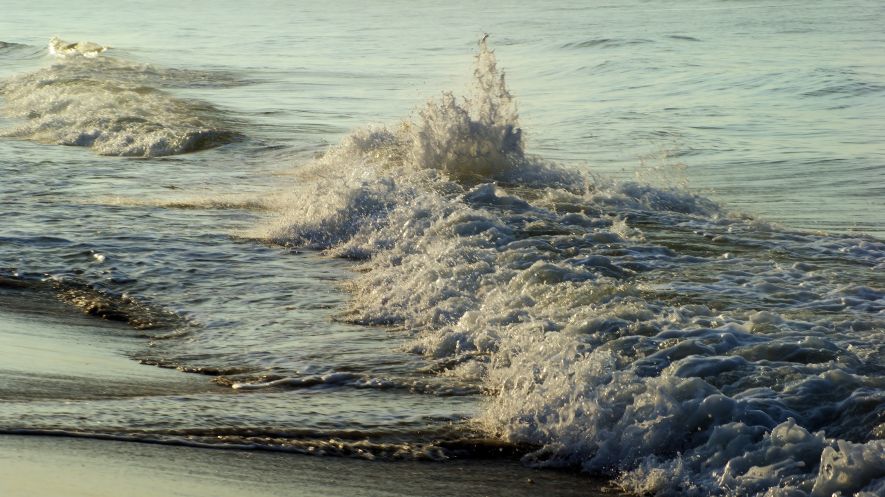Ocean chemistry has strongly shaped the evolution of life and biogeochemical cycles on the Earth. Although it was known that the early oceans (>520 million years ago) were characterized by strong water-column stratification and limited oxidant availability, the detailed chemical structure of early Earth oceans has remained unclear.
Recently, researchers in Wuhan have developed a model of the spatial structure of early-Earth ocean chemistry that significantly advances our understanding of how oceanic conditions influenced the evolution of higher life on our planet.
The results of their study, "A theoretical prediction of chemical zonation in early oceans (>520 Ma)", was published as the cover article of Science China: Earth Sciences in Nov. 2015. The lead author of the paper is Chao Li, a professor of biogeochemistry at China University of Geosciences (Wuhan). Dr. Li's research team used the chemistry of sediment porewaters in modern productive continental margins and seawater in modern anoxic restricted basins as a model for that of early Earth oceans. On this basis, they developed a highly detailed, idealized chemical zonation model for the oxygen-deficient oceans that existed prior to 520 million years ago.
"Earlier studies have shown that early-Earth oceans were generally stratified and had anoxic deep waters with very limited oxidant availability. These features are also characteristic of sediment porewaters of modern productive continental margins and the seawater of modern anoxic restricted basins, in which multiple chemical zones are developed owing to limited oxygen availability. It is inconceivable that similar chemical zones would not have developed in early-Earth oceans given the known limited oxygen availability at that time," said Dr. Li.
He further explained that similar redox zones from shallow nearshore to deep offshore regions of the early oceans may have developed, including oxic (O2-containing), nitrogenous (NO3--NO2--enriched), manganous-ferruginous (Mn2+ or Fe2+-enriched), sulfidic (H2S-enriched), methanic (CH4-enriched), and ferruginous (Fe2+-enriched). These zones were dynamically maintained by a combination of processes including surface-water oxygenation by atmospheric free oxygen, nitrate reduction beneath the chemocline, nearshore manganese-iron reduction, sulfate reduction, methanogenesis, and hydrothermal Fe2+ inputs from the deep ocean.
According to the researchers, one key difference between modern and ancient oceans is the spatial pattern of oxidant availability. Whereas modern oceans show vertical chemical gradients, early oceans are likely to have had pronounced lateral gradients owing to strong chemical inputs from rivers and mid-ocean hydrothermal systems, creating a series of wide, laterally inclined chemical zones across continental shelves. "The different spatial distribution of chemical zones in early oceans is likely to have had a major impact on early life." said Thomas Algeo, a professor at the University of Cincinnati (USA), who collaborated on the study.
Dr. Algeo pointed that "our detailed chemical model for early-Earth oceans is consistent with increasing evidence that early-ocean chemistry was highly heterogeneous and temporally dynamic. For example, recent studies have demonstrated that a sulfidic zone was widely developed at intermediate water depths in the global ocean prior to 520 million years ago."
"Most previous research on early-ocean chemistry consists of case studies based on one or a few sites. While these efforts are, without question, essential to reconstructing the ancient ocean's chemical state, the strong heterogeneity of early-ocean chemistry has made evaluation of its relationship to the evolution of early life extraordinarily difficult," said Bing Shen, a professor of geobiology at Peking University. "The precise redox framework proposed in Li et al. (2015) may help us to reconcile those conflicts and to precisely evaluate the co-evolutionary relationship between Earth's ocean chemistry and life.”
"The chemical zonation proposed for the early oceans likely reflects spatial patterns of oceanic oxygenation by rising atmospheric O2 levels in Earth history-- that is, direct oxygenation by atmospheric O2 from surface waters to bottom waters and indirect oxygenation by atmospheric O2 through input of continental weathering oxidants from nearshore shallow waters to distal deep waters. Thus, our model not only provides a robust theoretical framework for future studies of the evolution of ocean chemistry and biogeochemical cycles in early Earth history, but also may be of significance in understanding how progressive oxygenation of the Earth oceans influenced the evolution of early life," Dr. Li said.
Article Credit: Science China Press.



